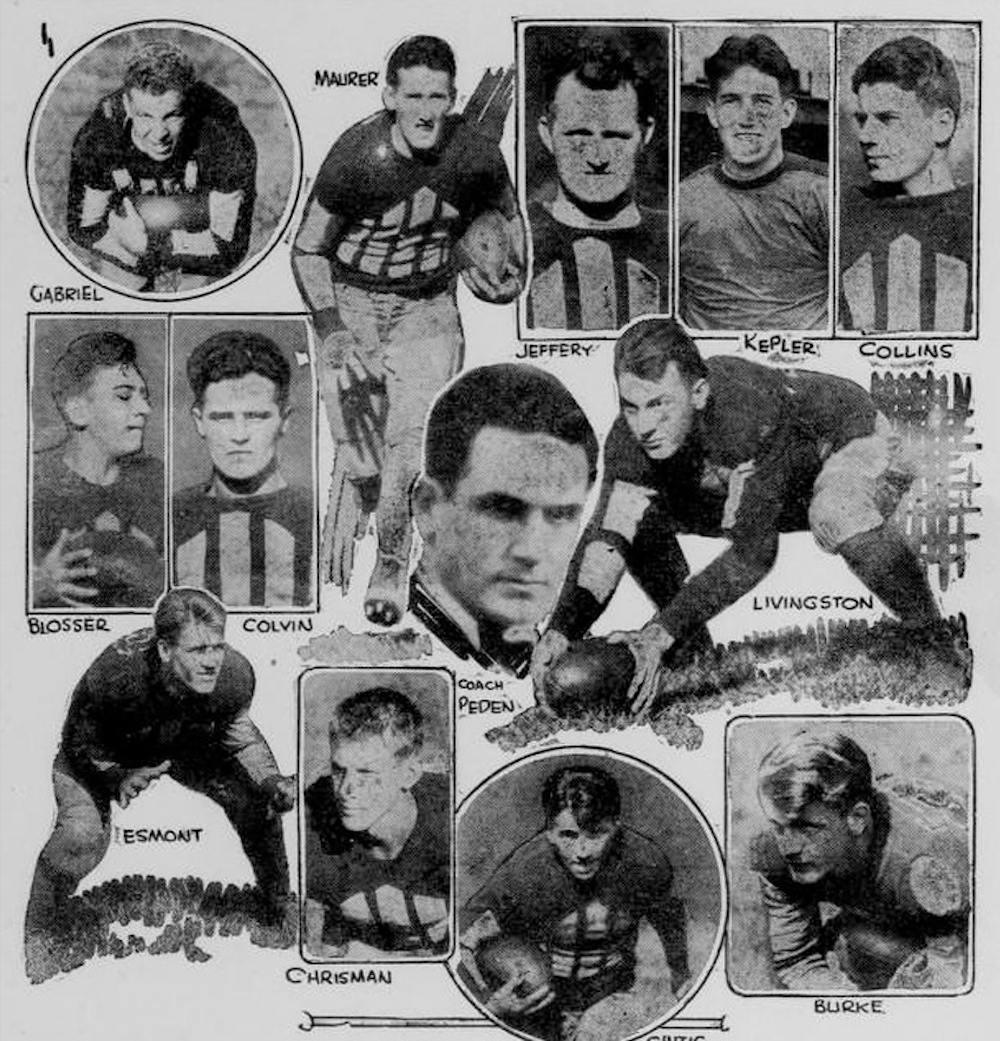A decade after the first National Football League game was played in Rock Island, Illinois, Ohio University coach Don Peden was grooming the first set of many OU athletes to play professional football after graduation.
Russell Kepler and Lenny Sadosky, both halfbacks, led the 1930 team to an undefeated season and the longest win-streak held by any OU team at that time. The highlight of their collegiate athletic careers, however, would come in 1932 when Ohio faced the Naval Academy.
“That’s a long trip to make to lose a football game. And we’re not going to lose,” Peden said, two days before the team would board a train toward the contest in Annapolis. His prediction proved true.
Following their 14-0 victory, the Bobcats were entertained by then-President Herbert Hoover, who held a banquet in their honor. Despite later losing the Buckeye Conference title for the first time in four years, Ohio University’s 1932 football team would be hailed that year as the most successful team OU had ever produced.
The team scored a total of 172 points that season, and gave up just 29 points to its opponents.
Kepler, who also threw javelin for the OU track team and served as junior class president, played professional football after graduation for the Cleveland Rams and the Boston Shamrocks from 1933-36. His college teammate, Sadosky, also joined the Cleveland Rams from 1935-36.
Bill Snyder, so beloved by the university that the school’s newspaper ran a story on his recovery from an "attack of tonsillitis," received All-Buckeye and All-Ohio honors for his senior performance as varsity tackle. Snyder had a brief career with the Pittsburgh Pirates in 1934-35 before suffering an infection in his leg that caused him to miss several weeks of his only season in the NFL.
The year following OU’s unexpected win and outstanding defensive show, Art Lewis secured a spot on the Bobcat roster. Lewis, a tackle from Middleport was named “the best known man on campus” by The Green and White newspaper in a glowing article published during his senior year.
“If you want to get to know Art Lewis, you should walk into his room some night, cock your feet on a chair and just start talking,” the article read. “The conversation will lead from his favorite topic — women — to almost anything. You will find that he has ideas, definite convictions and can talk about things besides football.”
Lewis boarded a train bound for California in December of 1935 to play in the East-West All-Star game on New Year’s Day. He was the first OU student to participate in such a game.
“He will represent not only Ohio University, but a mark for which football players in small schools will shoot for years to come. Never before has an undergraduate at Ohio been so honored,” read a story published in The Green and White on the day of his departure.
After graduation, Lewis joined the New York Giants and found himself on the road once again, this time en route to Honolulu, Hawaii, where he played 47 minutes for the East team in another New Year’s Day All-Star game.
Like Kepler and Sadosky before him, Lewis joined the Cleveland Rams for a season, and eventually became the Rams head coach. Lewis was fired midway through his first season leading the Rams because he chose to play tackle for the team while coaching, according to a Green and White article.
“I don’t like playing coaches,” the Rams club president, Thomas Lipscomb, said after firing Lewis, according to a Green and White article. “A man can’t run a team the way it should be run if he is going to play.”
A college teammate of Lewis, Bob Snyder, played a variety of positions for the Bobcats including halfback, tailback and punter prior to his own brief stint with the Rams.
Snyder, a “speedy lad who can skirt the ends and cut off tackle” according to The Green and White, had the longest NFL career of any of OU’s first five professional players. After a season with the Pittsburgh Pirates in 1936, he joined the Cleveland Rams and finally the Chicago Bears, where he played from 1938-41 and then again in 1943.






